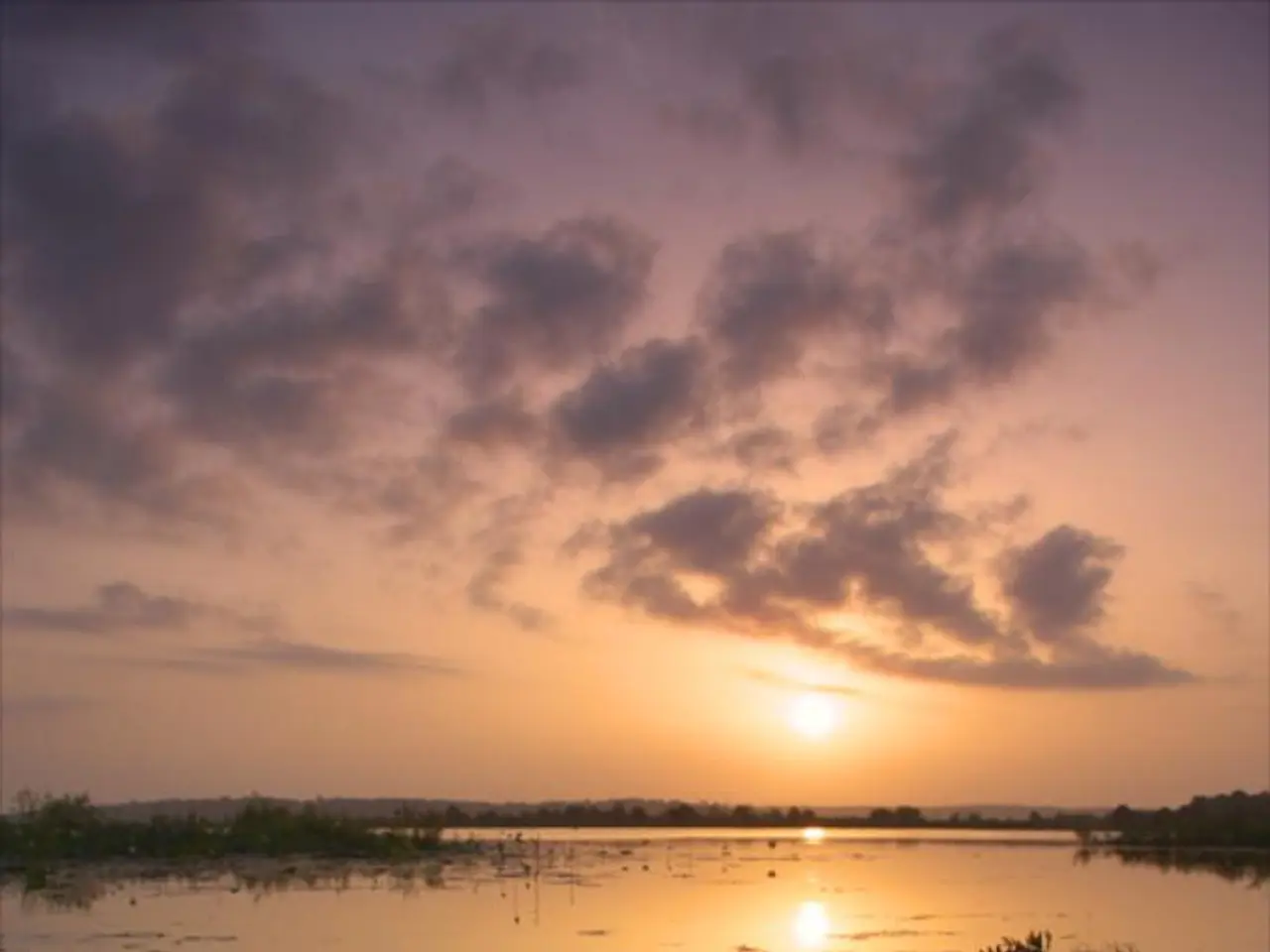World's Arid Regions: Examining Life Under Water Scarcity Due to Global Warming
In the heart of the Middle East, a silent crisis is unfolding as many villagers and city dwellers grapple with little or no water. From Iraq to Bahrain, the region is experiencing extreme heat, drought, and water scarcity more severely than any other part of the world.
The Euphrates and Tigris rivers, lifelines for millions, have seen their water volumes significantly reduced due to dams built by neighboring countries such as Syria, Turkey, and Iran. This has led to a dire situation, with traditional farming methods being displaced in countries like Iran, resulting in long-term devastating consequences for soils and reserves.
In Iraq, the majority of displacement is occurring in the center and south, forcing families like that of Mahdi al-Badri, a father of five from Babil province, to give up farming due to drought and lack of water for irrigation. Approximately 150,000 people have been displaced in Iraq alone due to these conditions.
As water becomes scarcer, Egypt faces its own challenges. Saltwater infiltration through irrigation canals, river arms, and groundwater reserves is causing salt crusts on agricultural soils, affecting up to 40% of soils. This has led to vegetables turning yellow and brown, wheat growing slower or dying, and the government banning rice, a crop that requires a lot of water, in most parts of the country.
Meanwhile, in Bahrain, modern life is only possible due to desalination plants, which cover almost 90% of their drinking water needs. However, these plants are pumping large amounts of brine into the sea, affecting water quality and driving fish away.
Iran's water crisis is particularly dire, with experts warning that water could run out as early as October. The capital, Tehran, with over 15 million residents, is particularly hard-hit, with water supply interruptions daily for hours, disproportionately affecting poorer neighborhoods. Thousands of families have left rural regions in Iran and moved to the capital, adding to an already overburdened system.
The 15 driest countries worldwide, marked dark red by the World Resources Institute due to extreme water stress, include 13 countries primarily in the Middle East and North Africa region such as Iraq, Bahrain, Iran, Egypt, Turkey, and most of the Arabian Peninsula, plus North African countries like Algeria, Libya, and Tunisia. Climate change is causing rivers in Iraq to dry up and groundwater to run out, exacerbating the crisis.
In an attempt to combat this, Saudi Arabia consumes around 300,000 barrels of oil daily for desalination technology. However, this is a temporary solution as the region grapples with a long-term water crisis.
In Turkey, sunflower farmers are experiencing decreased harvests due to the lack of rain for almost four months, which could result in a 50-60% decrease compared to last year. The drops in dam water levels have also temporarily cut off drinking water supplies for millions of residents in Izmir or tourist spots like Bodrum.
As the Middle East continues to grapple with this water crisis, it is clear that urgent action is needed to ensure a sustainable water supply for the future.
Read also:
- visionary women of WearCheck spearheading technological advancements and catalyzing transformations
- Recognition of Exceptional Patient Care: Top Staff Honored by Medical Center Board
- A continuous command instructing an entity to halts all actions, repeated numerous times.
- Oxidative Stress in Sperm Abnormalities: Impact of Reactive Oxygen Species (ROS) on Sperm Harm








